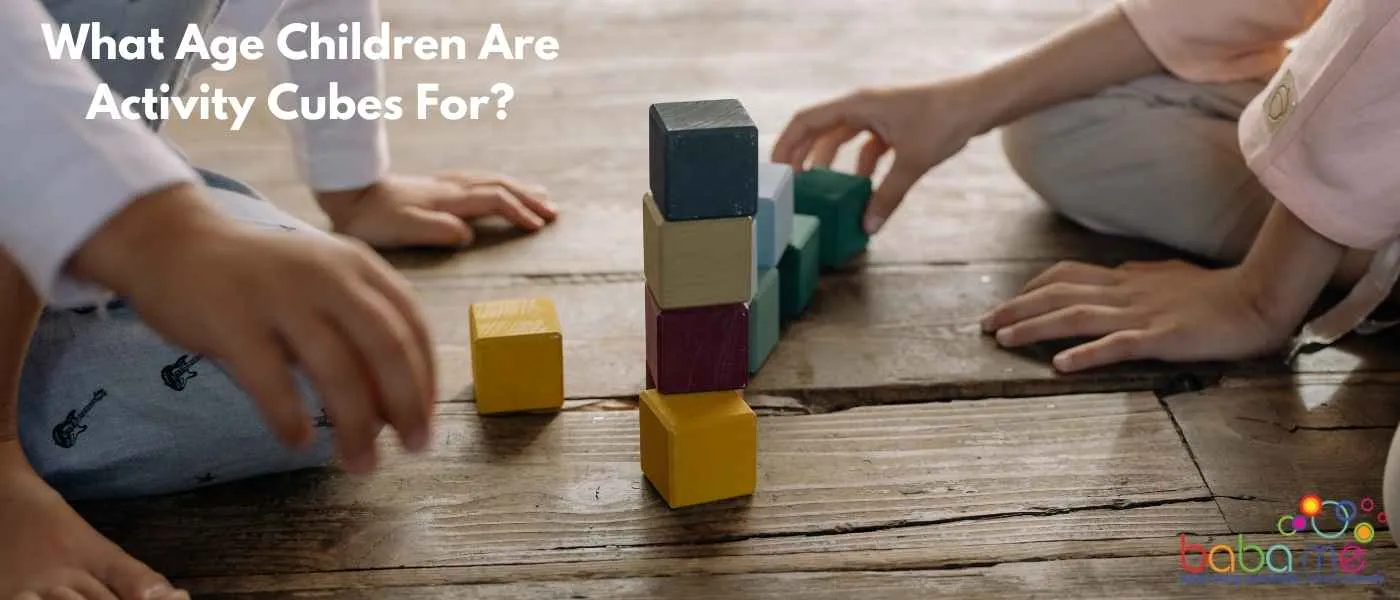Activity cubes come in all shapes (well mostly cube-shaped, but triangles, tables and just big boards can be found as well) and sizes but what age children are activity cubes for? Well, there are lots of different kinds available, some from just 3 months old and others for toddlers aged 12-18 months.
Activity cubes are typically designed for children aged 6 months to 3 years. This age range is ideal because the activities offered by these cubes often align with the developmental milestones of infants and toddlers. For instance, at 6 months old, children start to develop fine motor skills and hand-eye coordination, which can be enhanced by the various features of an activity cube, such as spinning gears and shape sorters.
Key Takeaways: Age Range for Activity Cubes
- Activity cubes are ideal for toddlers aged 1-3 years. This age range benefits most from the sensory and motor skill development offered by activity cubes.
- Children as young as 6 months can enjoy certain features of activity cubes. Some activity cubes have elements suitable for younger babies, like simple shapes and textures.
- Preschoolers up to 5 years old can still find value in activity cubes. Older toddlers and preschoolers can use activity cubes to refine their problem-solving and fine motor skills.
- The complexity of the activity cube should match the child’s developmental stage. Simple cubes are best for younger toddlers, while more complex ones are suitable for older children.
- Activity cubes often include a variety of activities to cater to different age groups. Features like shape sorters, bead mazes, and puzzles can engage a wide age range.
- Safety is paramount for children under 3 years using activity cubes. Ensure the cube has no small parts that could pose a choking hazard for younger toddlers.
- Interactive elements in activity cubes can stimulate early learning in children. Activities like counting beads or moving parts help with early numeracy and coordination.
The idea is that they offer lots of different activities for your little one to enjoy in one compact toy, and generally, they don’t have too many loose pieces to get lost of swallowed, which may be why they are so popular in the waiting rooms of doctors and dentists.
Another reason you might see them in waiting rooms and community spaces up and down the country is that they offer so many developmental opportunities for your little one. From the moment they are born children are constantly learning, and from about the age of six months toys become an important part of that process.
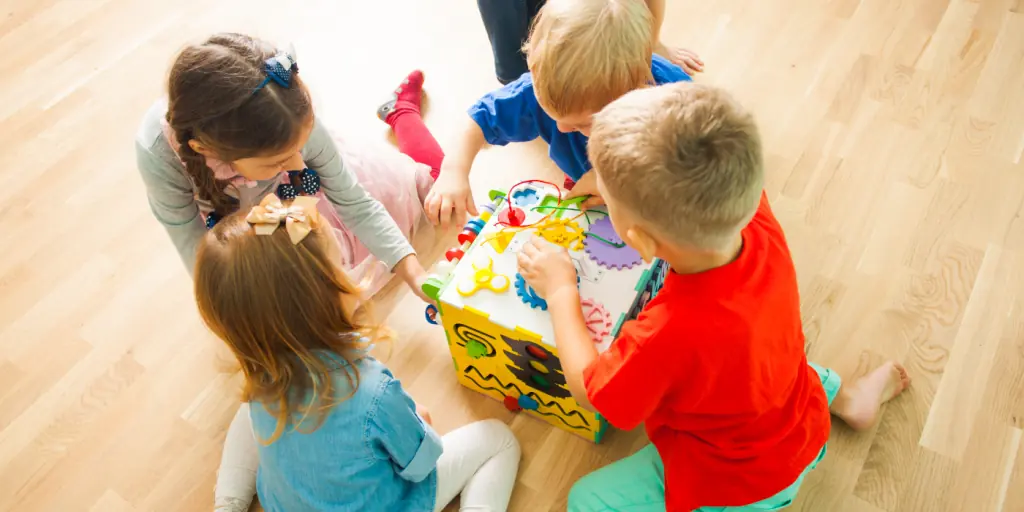
In their first few months of life, babies learn that they can grab at things and move them. They learn about cause and effect for example when they shake a rattle it makes a sound or when they drop their cup on the floor mummy makes a sound.
They learn about problem-solving, hand-eye coordination, object permanence, they recognise shapes and learn colours and counting.
A good activity cube can help with all these skills and more. You just need to make sure you pick one that has enough complexity to keep your little one entertained without being too complex so that they get frustrated and lose interest before they master the skills.
Best Activity Cube from 3 Months

Vtech Soft & Smart Activity Cube
This is a great first activity cube, providing visual, auditory and tactile fun for your baby.
Best Activity Cube 6 Months+

Vtech Busy Learners Activity Cube
This interactive learning cube is perfect for little ones 6 months and up who love lights and sounds
Best Activity Cube 12+Months

Activity Cube Walker
This activity cube walker is a space saving addition to any Montessori playroom. Your little one will have fun while learning how to walk and to recognise colour, number and shapes.
What Age Children Are Activity Cubes For?
The age at which you should buy an activity cube for your child will depend on their individual development and abilities.
In general, activity cubes are typically recommended for children who are at least 6 months old, as this is the age at which most babies are able to sit up on their own and begin exploring their surroundings.
Activity cubes are designed to provide children with a variety of engaging and interactive activities that can support their development.
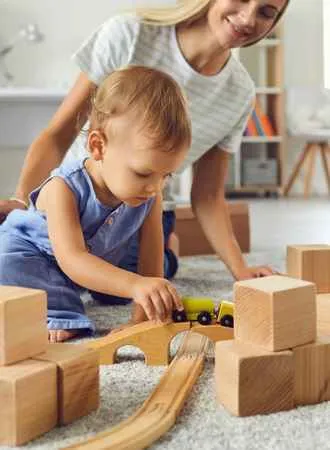
At around 6 months old, babies are typically starting to develop their fine motor skills and hand-eye coordination, and activity cubes can provide them with fun and stimulating ways to practice these skills.
However, it is important to choose an age-appropriate activity cube for your child. For example, activity cubes designed for infants may have larger buttons and other elements that are easy for small hands to grasp and manipulate.
Activity cubes for older children may have more complex activities and features, such as gears to turn or puzzles to solve.
How Do I Choose an Activity Cube that’s the Right Age Range For My Child?
Choosing an age-appropriate activity cube for your baby is an important decision as it can play a significant role in their early development and engagement. The right baby activity cube can really bring on your child’s development. Here are some steps to help you select the right one:
- Consider Your Baby’s Age and Developmental Stage:
- Activity cubes are designed with specific age ranges in mind. Look for a cube that matches your baby’s age and developmental stage. Most cubes have recommended age ranges on the packaging or product description.
- Safety First:
- Ensure that the activity cube meets safety standards and regulations for baby toys. Choose age appropriate toys that have been adequatly tested for the age range. Look for products that are free of toxic materials and have rounded edges to prevent injuries.
- Size and Weight:
- Choose a cube that is an appropriate size and weight for your baby. It should be easy for them to manipulate and play with but not too heavy or cumbersome. A wooden cube is also great for babies to sit at.
- Material and Durability:
- Opt for a cube made from high-quality, non-toxic materials that can withstand wear and tear. Babies tend to explore with their mouths, so it’s important that the materials are safe if chewed on.
- Variety of Activities:
- A good activity cube should offer a variety of engaging activities that stimulate different senses and skills. Look for features like a bead maze, fun shapes, mirrors, buttons, gears, knobs, textures, and colors. Consider what developmental areas you want to focus on, such as fine motor skills, sensory development, or problem-solving.
- Educational Value:
- Choose an activity cube that offers educational benefits. Look for cubes that help with letter and number recognition, shapes, colors, and other early learning concepts. Activity cube walkers can also help with gross motor skills.
- Interactive Features:
- Some cubes come with interactive elements like lights, sounds, and music. Consider whether you want these features and whether they align with your baby’s preferences.
- Portability and Storage:
- Think about whether you want a cube that is easy to transport and store when not in use. Some cubes are foldable or have removable parts for easy storage, while a wooden activity cube may be more bulky than you’d like.
- Reviews and Recommendations:
- Read product reviews and seek recommendations from other parents to get a sense of how well the activity cube has worked for their babies.
- Budget:
- Set a budget for the activity cube and try to find one that offers good value for your money. Keep in mind that quality and safety should be a higher priority than price alone.
- Personal Preferences:
- Consider your baby’s personal preferences. Some babies may be more interested in music and lights, while others may prefer tactile or sensory activities.
- Longevity:
- Think about whether the cube is versatile enough to grow with your baby. Some cubes offer adjustable height settings or removable parts to adapt to different developmental stages.
Remember that babies develop at their own pace, so choose an activity cube that aligns with your baby’s current abilities and interests. It should be a fun and engaging toy that supports their growth and learning.
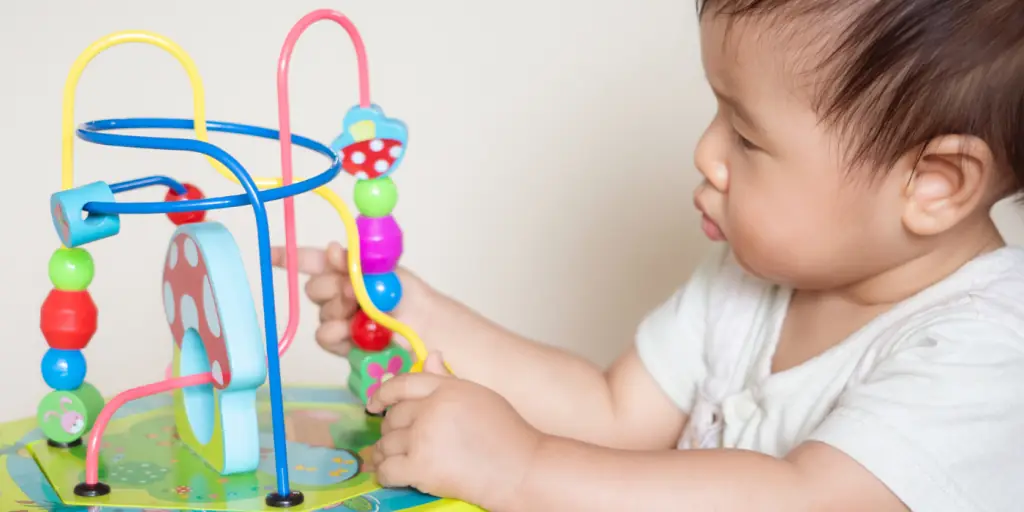
Activity Cubes for Babies
Many activity cubes are aimed at children of 12 months and above but there are some that can be great for even smaller babies.
Once your little one can sit unaided they also usually have an interest in grabbing and playing with toys and have some level of coordination. They can get food into their mouths and they can start to figure out some of the more basic elements of an activity cube.
Soft cubes are great at this age as well as they are light, easy to hold, and yet still offer lots of different sensory activities and experiences.
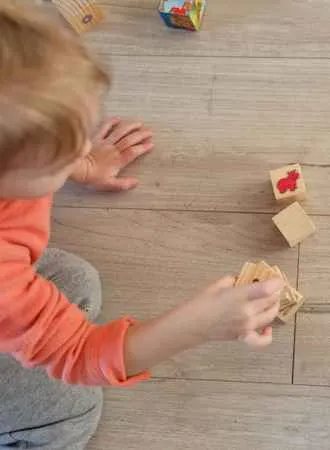
Activity cubes for toddlers
From about 18 months little ones are really beginning to develop their hand-eye coordination and problem-solving skills, making this a great age for activity cubes and busy boards.
You know your child best so try and choose something that suits their level of development. For example, if they can already count to 5 choose one with higher numbers, and if they are starting to recognise letters pick one that has the alphabet. An activity walker is also excellent for this age group.
Lock boxes are also lots of fun and great for really getting those fine motor skills, hand-eye coordination and dexterity working.
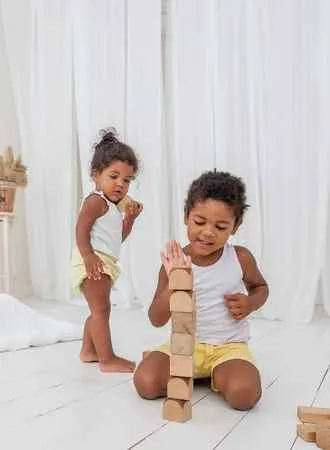
What Alternatives Are There to an Activity Cube by Age Range?
Activity cubes are great, they are engaging and fun for little ones and offer loads of opportunities for development including sensory development, motor skill development and cognitive development.
However, while they seem to be the perfect toy for doctors waiting rooms, and any other waiting room for that matter, they can be pretty bulky and not everyone’s first choice for their living rooms.
So if you don’t really have space for an activity cube or just feel you might be able to spend your money better elsewhere, we have compiled a list of a few good alternatives to activity cubes that offer the same opportunities for physical and cognitive development.
4+ Months; A Busy Board
There are plenty of options for busy boards that you can purchase, or if you are feeling like it you can make your own.
You can put anything you like on a busy board. Locks and latches are popular choices, as they are great for developing fine motor skills, logic and problem-solving skills as well as the fact that kids love them.
Clips, cogs, materials of different textures, holes to post things through, knobs to turn, zips and switches are all really good fun. And you’ll be surprised how long these little boards will keep kids entertained for.
6+ Months; Building Blocks
Activity toys can be a little over-stimulating for children, especially if they are battery operated and feature music and flashing lights as well as simple manipulation activities.
Building blocks are a very simple toy but they offer many of the same developmental benefits that your child will gain from an expensive activity cube.
Babies learn to grip and manipulate blocks, they discover cause and effect as they bash them together and they learn problem-solving skills as they try and get the blocks to balance. Blocks are often brightly coloured so children can get to learn colours and colour matching. Stacking blocks can be combined with counting skills and many sets of blocks will feature the alphabet or animals.
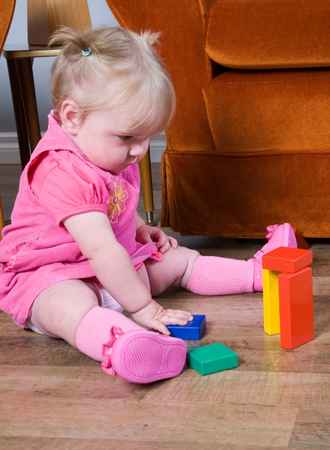
9-12 Months; An Activity Cube Walker
First up is the activity walker. This is a great option for little ones that are not yet walking or just learning to walk. Just like an activity cube an activity walker generally has lots of different activities to keep little minds entertained, and they can generally be played with as soon as babies can sit unaided.

This means you can buy one at the same time as you would purchase an activity cube but it will serve a dual purpose as a walker when babies get to the stage of standing and taking their first steps.

